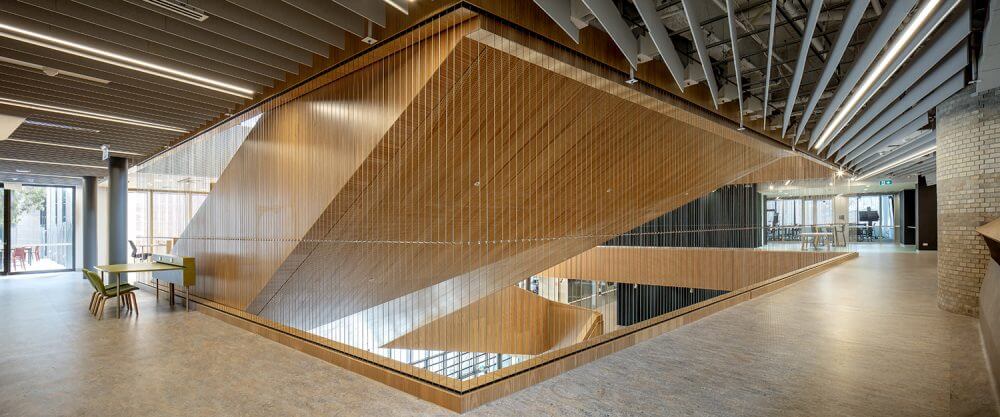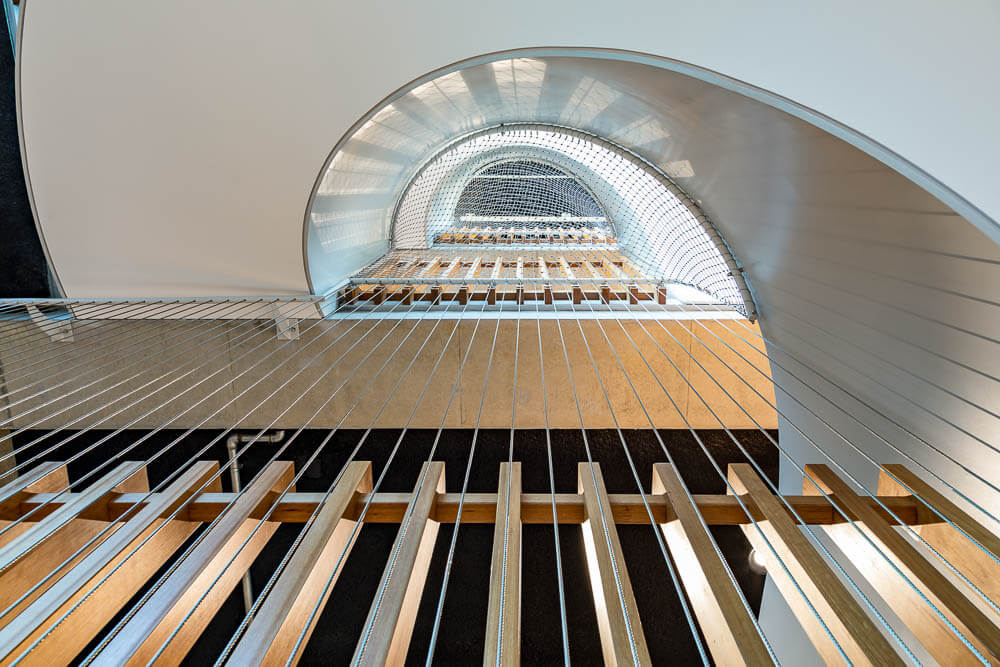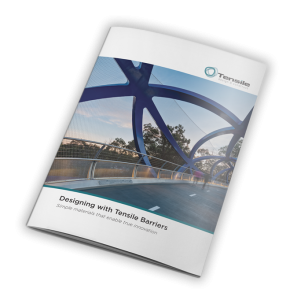Commercial atriums help to create a sense of airiness and light within a building. They can also foster community and engagement by allowing for sightlines across the various levels.
Safety is an obvious concern of course, so any atrium will need a robust barrier. But it’s important the barrier isn’t cumbersome or one that intrudes on design intent.
Webnet and vertical cable systems offer numerous benefits for commercial atrium safety barriers. Let’s take a look.
Meeting of safety codes
The National Construction Code (NCC) states any structure four metres or more above the ground surface must have a non-climbable balustrade. So, for an atrium, the barrier needs to be tall enough and designed in such a way to prevent people climbing and falling over the edge. It should also act as an anti-throw screen to protect against objects falling into the spaces below.
Glass is often a preferred material for atrium barriers. However, making a glass barrier non-climbable isn’t always simple. For example, if the panels are under 1,200mm in height, the upper space cannot be fully used as any objects that could be climbed on (e.g., furniture) must be positioned more than one metre from the void edge. Installing larger glass panels can address the climbability problem, but this adds to the cost.
Webnet and wire rope cables however are high-strength materials that come with large span capabilities. This enables the creation of robust full-height barriers that are completely non-climbable. Examples can be seen at the Melbourne Music Conservatorium, where a vertical cable barrier extends across three levels, and Melbourne School of Design with its five-storey Webnet mesh barrier.

Appearance matters
If the aim is to create a light, airy and connected space, then an atrium barrier needs to be unobtrusive in appearance.
Because glass is transparent, it is often used for commercial atrium barriers. But ensuring glass meets all safety codes can be a costly exercise.
Webnet mesh and vertical cabling do offer near-transparency while easily meeting safety codes, making these materials ideal for atriums. Webnet mesh for example has a light, almost filigree-like appearance. Vertical cables also allow for natural light entry and views – as demonstrated at the Monash Uni LTB atrium.
Speed of installation and adaptability
Stainless steel Webnet mesh and wire rope are lightweight materials that can be installed remarkably quickly, often within a matter of weeks. They are also very flexible, unlike more rigid materials such as glass and panelling. This makes them more adaptable to curved and irregular shapes within an atrium.
Substructure requirements
Many barrier materials (glass, weldmesh, and Perspex for example) require a subframe for installation, whereas Webnet and vertical cabling systems do not.
This not only makes them easier and less costly to install, but it also allows for easier retrofitting of barriers in existing buildings.
Complex geometric forms
Webnet mesh comes in a range of aperture opening shapes and sizes, allowing for greater design freedom. Its malleability also means it can conform to any shape. This can be seen at the Royal Far West (RFW) Children’s Charity where the Webnet barrier conforms to the curves and twists of the spiral staircase.
The RFW barrier was also a retrofit installation, but it gives the appearance of always having been in place rather than added on afterwards.
For more information on commercial atrium barriers
There are many other advantages of Webnet and vertical cabling for commercial atrium barriers, including excellent longevity and modularity and low maintenance needs. To find out more or to discuss a project idea, contact us.






































